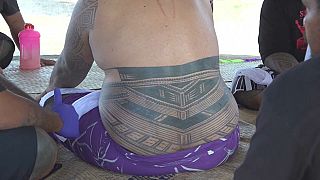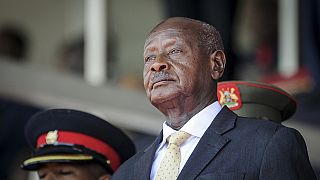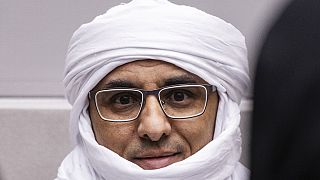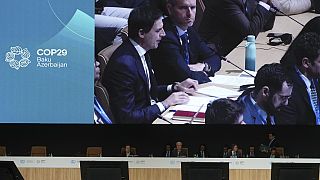Uganda
In Uganda, the production of engineered bamboo primarily begins at a nursery, where a variety of grass are grown.
Once they mature, the bamboo poles are sliced into tiny strips that are glued together to make beams.
Typically replacing wood, these bamboo pieces go beyond timber. The Amabanda processing facility situated outside Kampala produces high-quality bamboo that can be turned into corrugated roofing sheets, tiles and even fiberglass.
“What we see is not just a round golden tube like the ones behind me. What we see is an industrial-grade material, raw material that can do so many things. So Amabanda’s role is here to close the commercialization and industrialization of bamboo,” said Robert Semakula, a partner at the Amabanda processing facility.
These lightweight sophisticated bamboo products make their way to Europe where a start-up is using high-tech processing to transform them into thin fibers that are glued together to make material used for cars, airplanes and windmills.
“So, there is a lot of interest in Uganda and some people have planted but everyone is asking where do we sell our bamboo? Where is the market? So that is why we started with the processing facility as one of the first steps to show people what you can do with bamboo - because there are so many different applications of bamboo - and to showcase and also to provide market,” said Thomas Quirynen, Amabanda director.
Bamboo’s tensile is stronger than that of steel, which is why it is being considered for reinforcement in construction.
The team here is working days to produce a container of strips but that requires 5,000 poles per month to meet the demand.
In Uganda, commercial plantations are still few and young so their biggest challenge at the moment is access to bamboo.
“You can propagate 100 and get five or seven only. So, we are still struggling with that challenge and we actually need scientists to come in because the seedling is still very expensive for the farmer. If there could be, for example, tissue culturing of bamboo, that would help but for now, we are struggling with plant material,” said Taga Nuwagaba, a bamboo farmer.
In a country where proper hardwood is becoming scarce, this grass is closing the gap slowly.
Yes, bamboo poles come in different shapes and sizes, which makes calculation during production difficult.
Engineered bamboo is solving this problem.












01:16
Ugandan opposition politician kidnapped and jailed, his wife says
02:19
Thousands of refugees in Uganda struggle to get by, amid cuts in humanitarian aid
01:41
Victims of Uganda’s Lord’s Resistance Army disappointed in sentence
01:55
Uganda invests $3 billion in new railway system for efficient transport
01:42
Gasoline truck overturns and explodes near Uganda’s capital, killing 11
00:10
Ugandan Olympian Rebecca Cheptegei laid to rest